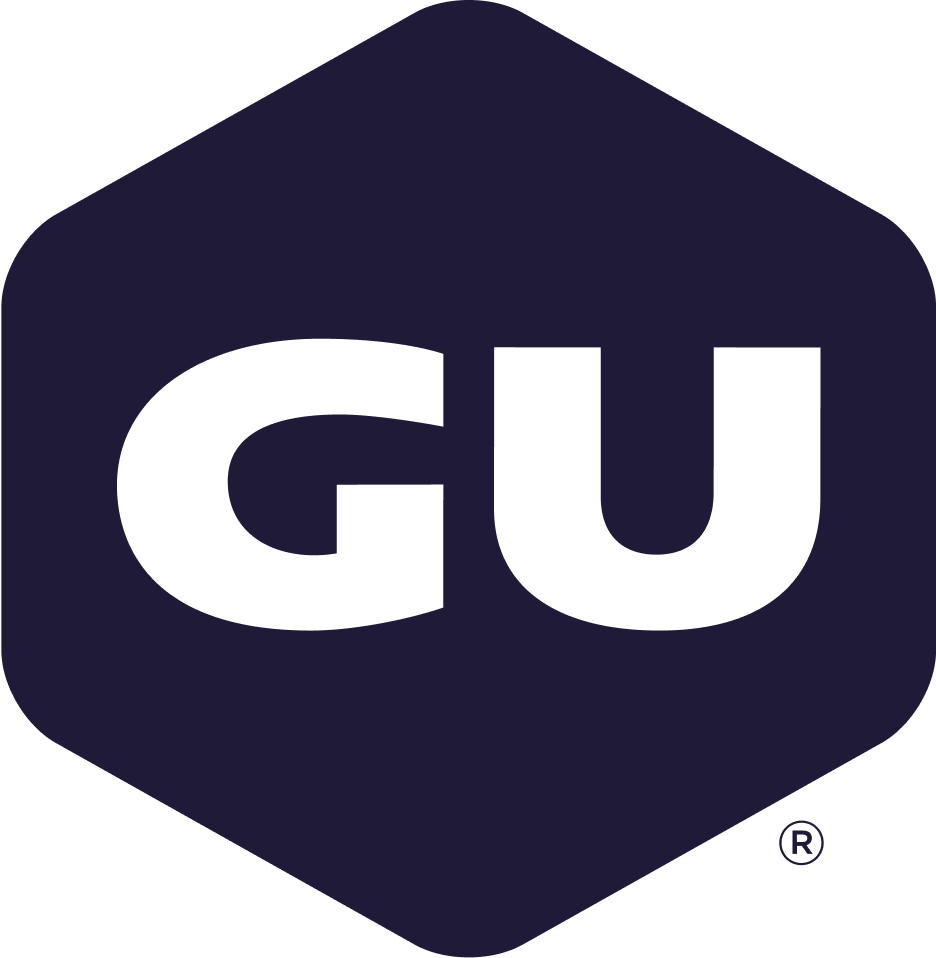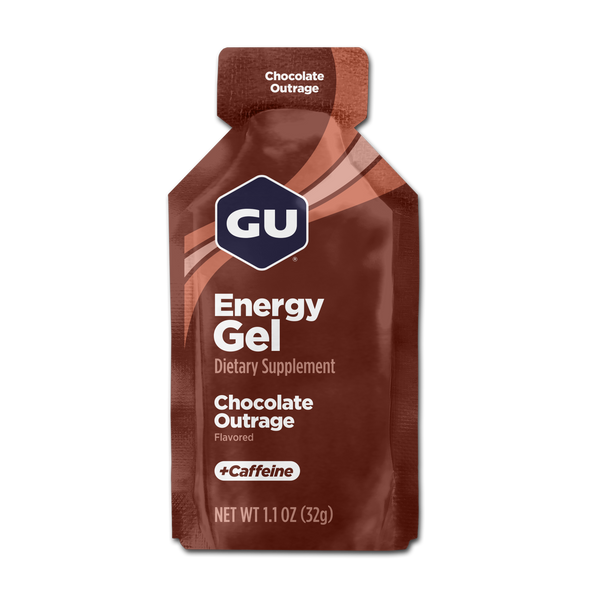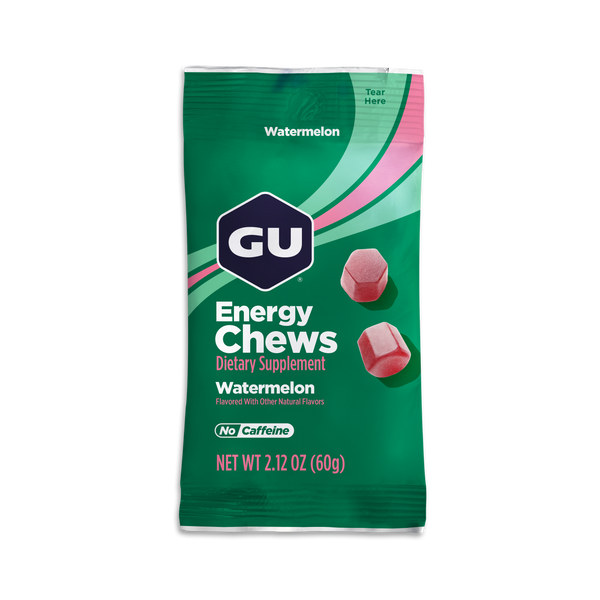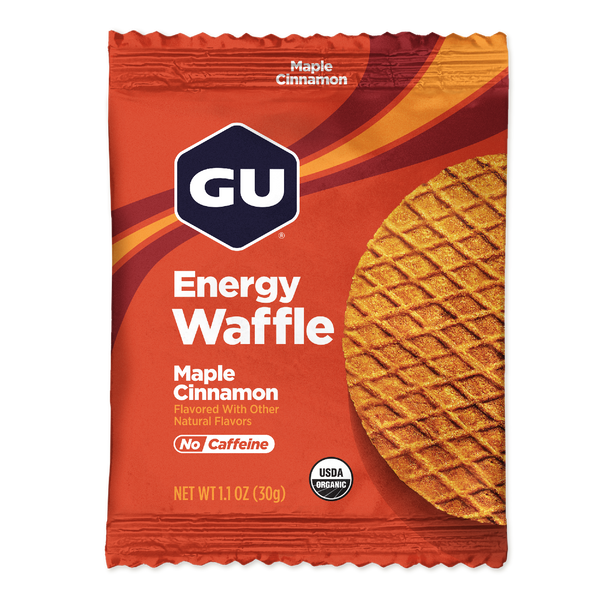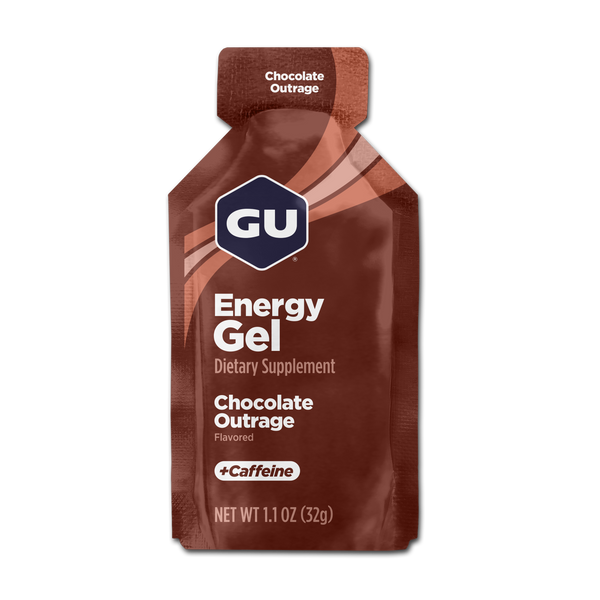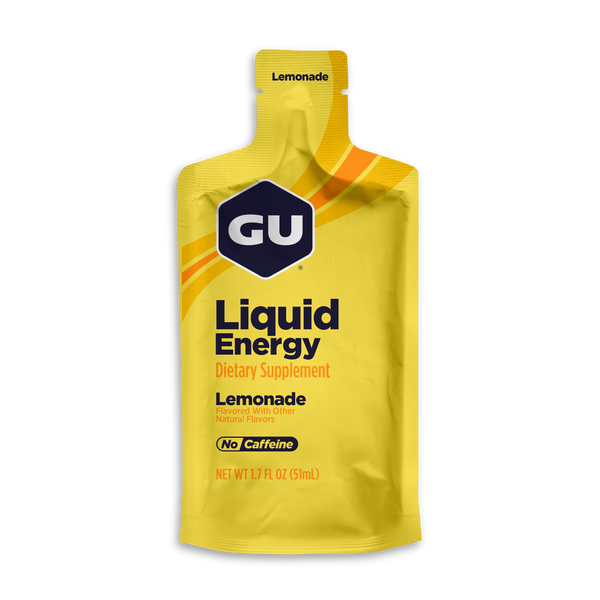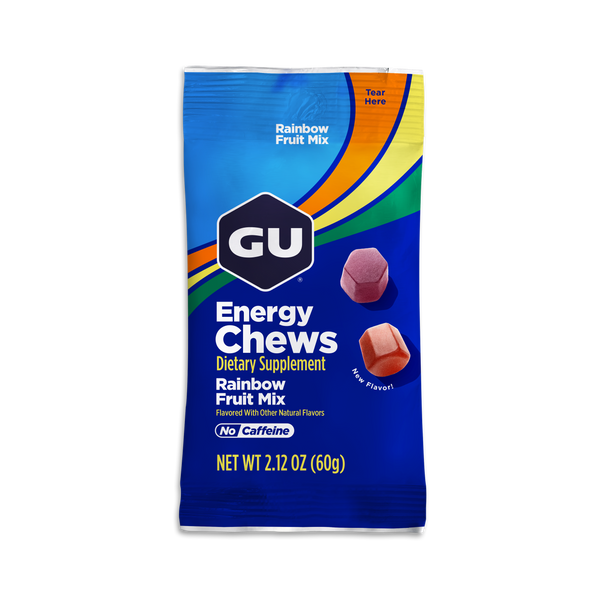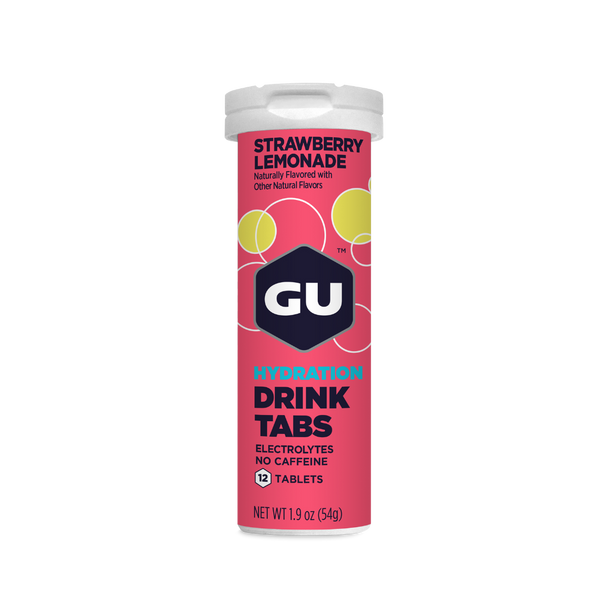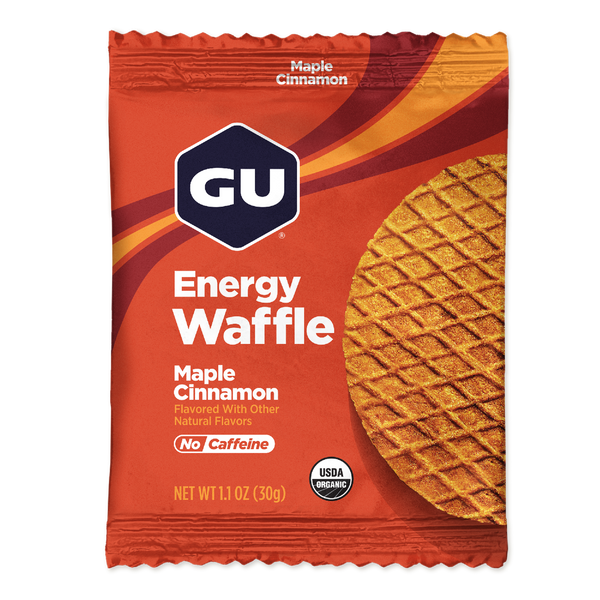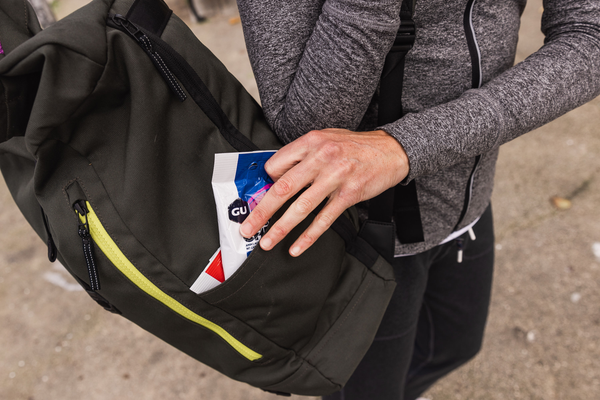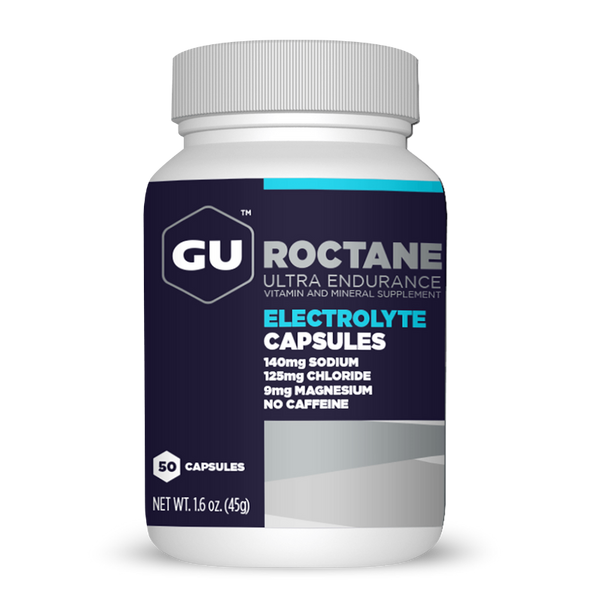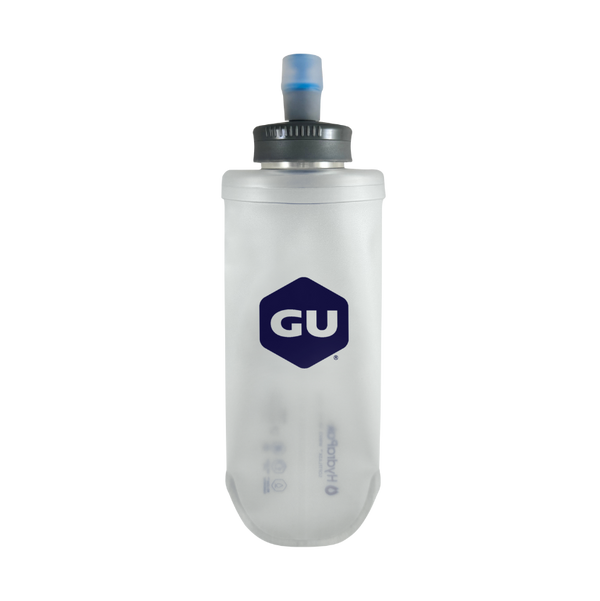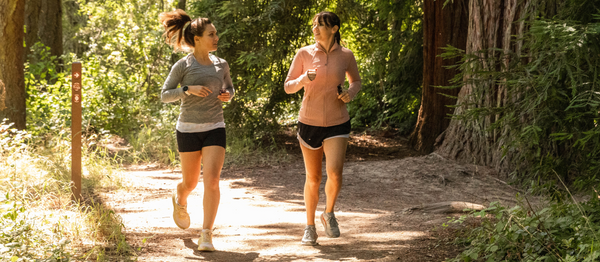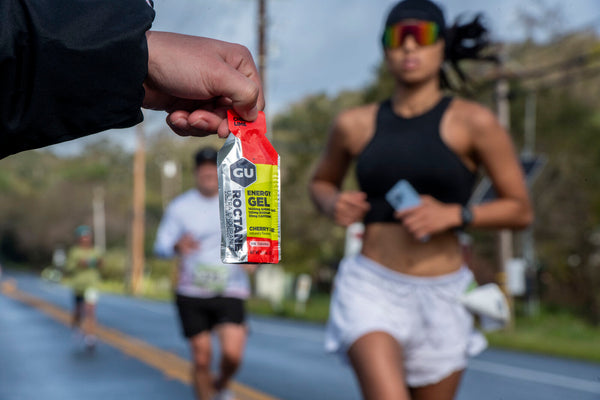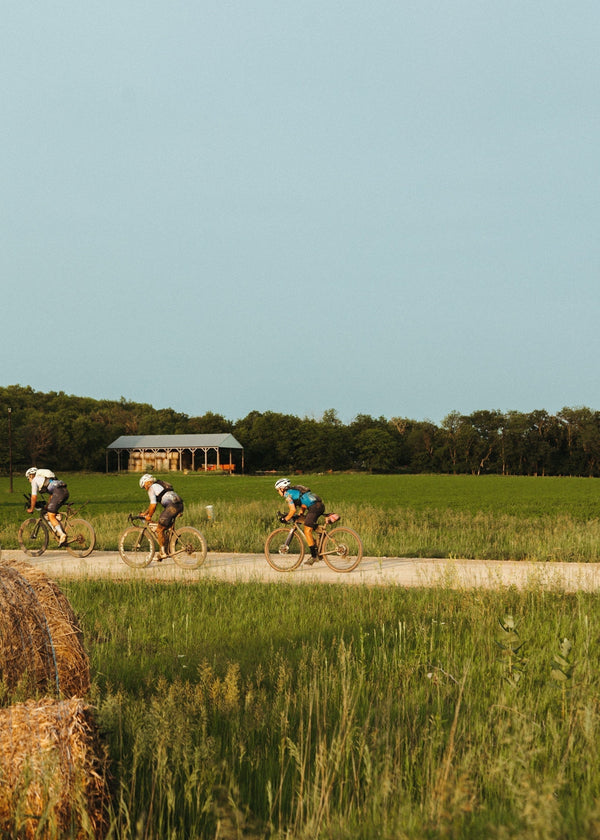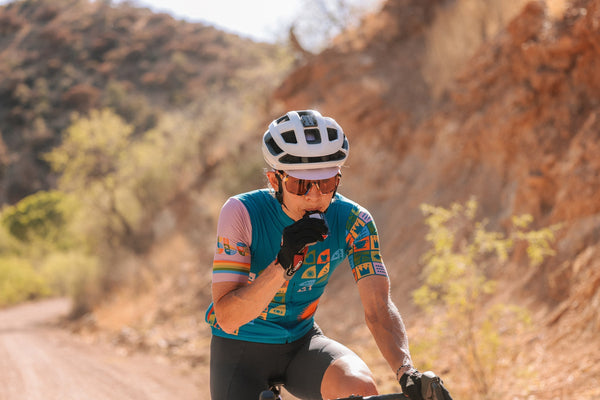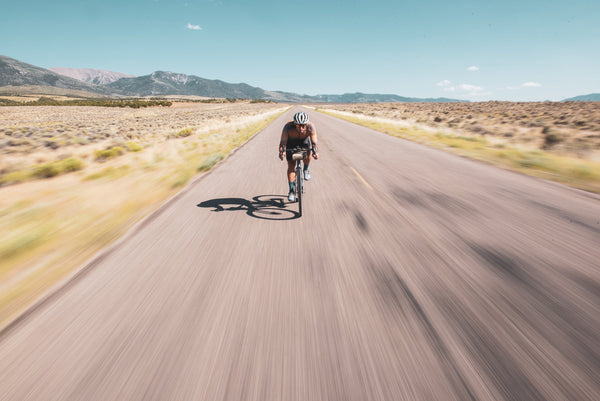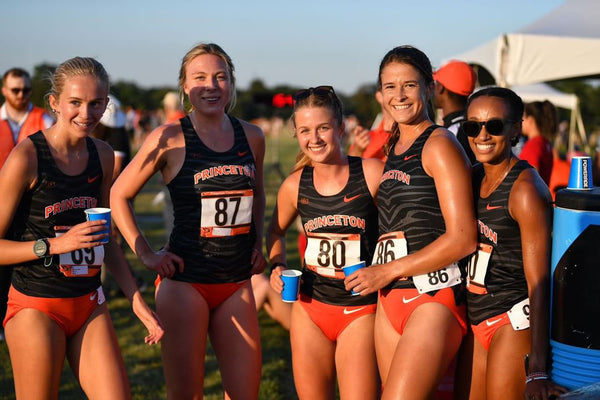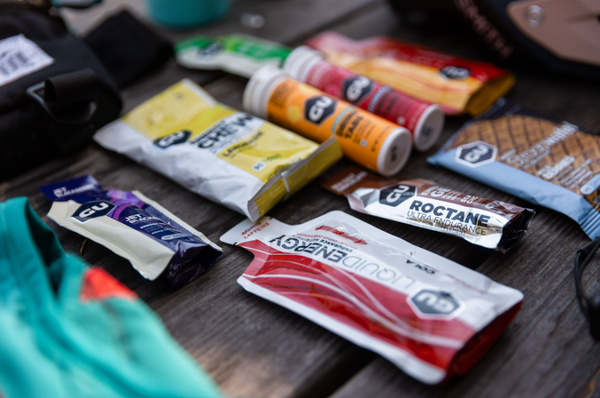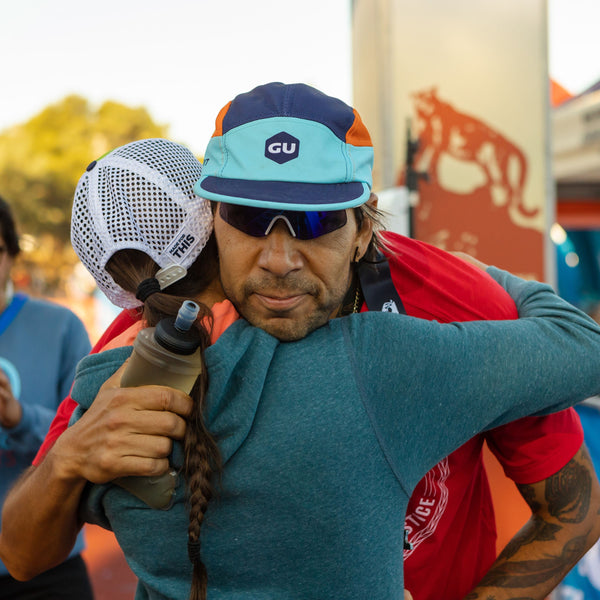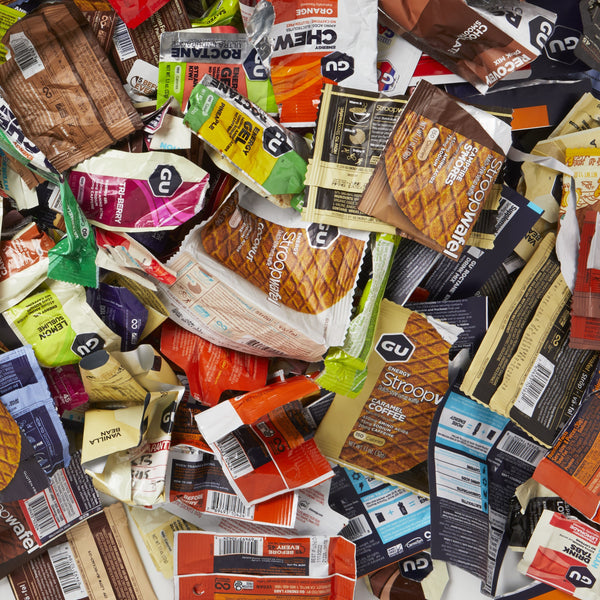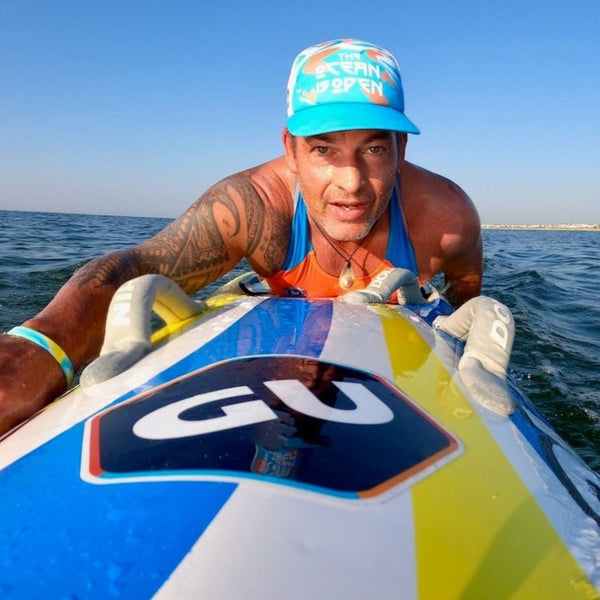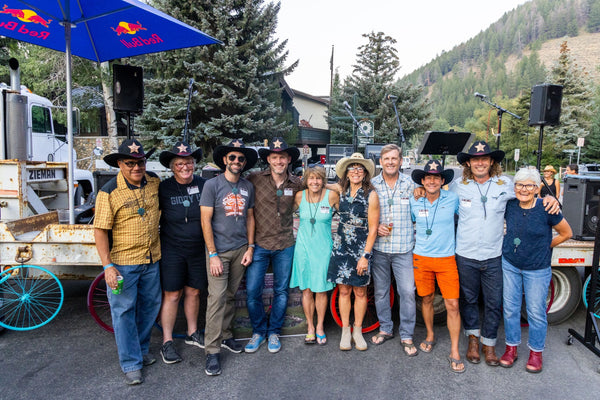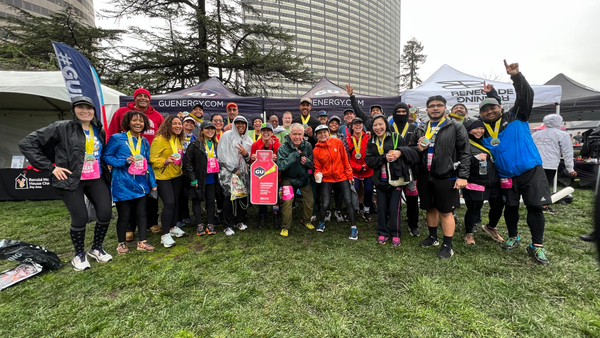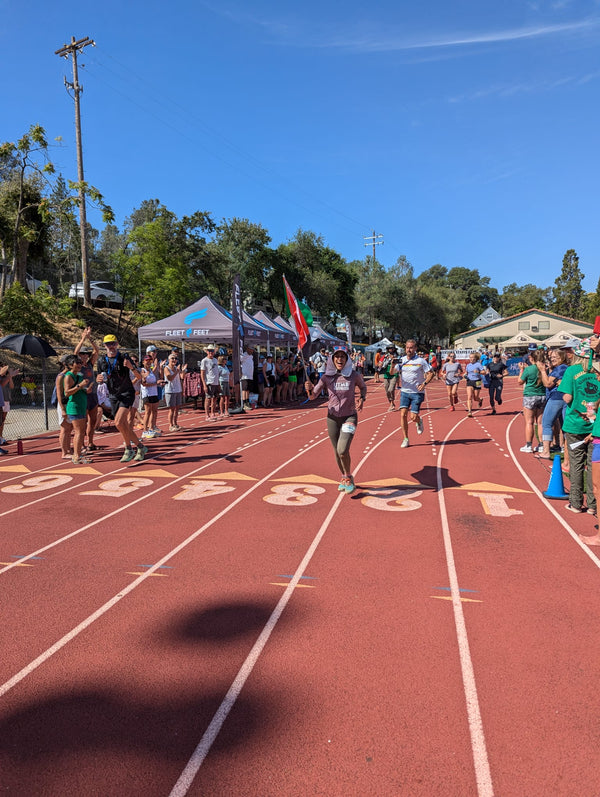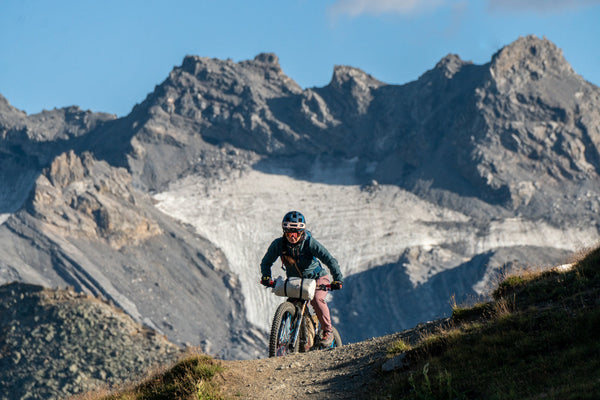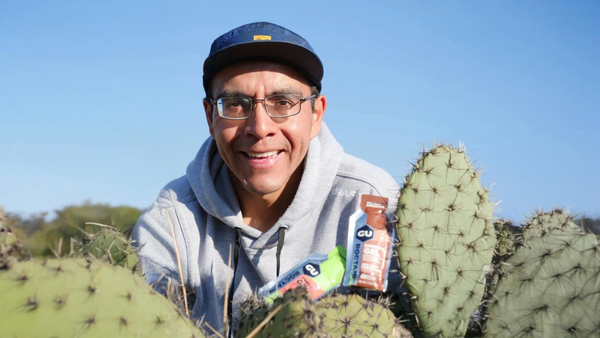Cherie Gruenfeld is incredible. She has raced the IRONMAN World Championships in Kona 20 times and has 12 IRONMAN World Championship titles. She’s also 71 years old.
Cherie has been a member of the GU Crew since the beginning. She’s helped GU Energy grow, and inspired us along to the way to set big goals and world hard to exceed them. Cherie is preparing to race her 21st World Championship in Kona on October 10th, and we can’t wait to follow her progress.
We caught up with her to ask her a few questions about Kona, her training, and what inspires her to keep doing what she’s doing.
GU Energy: On October 10th, you will plunge into your 21st IRONMAN World Championships in Kona. What keeps you coming back every year?
Cherie Gruenfeld: Spending a couple of weeks in Kona every October….Why wouldn’t I come back?
Actually, there’s a better reason.
When I did my first IM, which was in Kona in 1992, my intent was “one and done”. But, of course, that didn’t happen.
I’ve always been driven by goals and I love the process of building a plan and executing that plan. During the peaking phase in Kona preparation, it’s very gratifying to feel things coming together, knowing that I’ve done the work and race day will be the final test. And running down Ali’i Drive and crossing the finish line never gets old. It’s an experience that is different for everyone and it’s different for me each year. But it’s always an experience I want to repeat and I’m willing to put in the work to make it happen.
GU: We are about a month away from Kona. Tell me a little bit about your final weeks of training. What’s your plan leading up to the big race?
CG: This season I did several 70.3 races: Wildflower, Honu, Vineman. In past years, I’ve also included the 70.3 Championships, but this year I changed in up and instead included and USAT Olympic distance Nationals in early August.
This schedule put me in a good position to kick-off my Kona training in mid-August with longer distance workouts. At this point in the schedule, I’m in a peak phase where I put it all together – workouts testing distance, strength, speed.
I’ll do this for a three-week period and then go into a taper phase where I let my body get completely rested from the season-long hard work. If I execute this plan perfectly, I’ll be 100% ready on October 10th when the cannon goes off in Kailua Bay.
GU: How do you go about setting goals for big race like the IRONMAN World Championships?
CG: My first goal, always, is to win 1st place.
Following closely, is the goal to break the age-group course record.
My strategy for accomplishing those two things is to set tough time goals in each discipline. I base these goals on several things:
- Last year’s Kona performance
- Current season race performances
- Current season training
- What I believe I’ll need to do to accomplish my goals
When goal-setting for Kona, you have to go into it with an open mind. If it’s a year of outrageously bad conditions, time-goals may have to be reset mid-race. The key, in my mind, is to make that mid-race time adjustment and immediately start working against the new goal. Giving up and throwing goals out mid-race, I believe, has a good possibility of negatively affecting one’s race.
Having said this: There are moments where you’re racing head-to-head with your competition. At that point, my strategy is simple: Do what you have to do to get to the finish line first!
GU: What has to happen on race day for you to look back and be happy with your performance?
CG: Although I always want to accomplish my goals, I don’t absolutely have to in order to be happy with my performance.
I’ve had a couple of races in Kona where I wasn’t 100%. Those races, although not my fastest, are the ones I’m most proud of.
If I feel that I did the best I could with what I had on that day, I can walk away happy.
But make no mistake about it – When I win…..That’s the best!
GU: You’ve been racing and training for triathlons since 1992. How has your training strategy changed over time?
CG: I don’t believe my training strategy has changed over the years. Some years I change things up a little, but by-and-large, the concepts upon which my strategy was built in 1992 is the same today in 2015.
What has changed is the amount of rest that I’ve had to build into my weekly schedule.
I do the same “key” workouts (albeit a bit slower) that I’ve always done and surround them with enough recovery days to prepare for the next key workout.
GU: As a 71-year-old who’s still competing at a high-level, you are an inspiration to a lot of people. Who inspires you? Who do you look up to?
CG: We all admire the professional athletes. They seem to defy what we know of human limitations as they continue to set new records and higher standards. But the true inspiration, in my opinion, is the everyday athlete who puts it all on the line to test the limits of body and mind, without a sponsor to subsidize the effort. Driving this athlete is something personal, maybe the opportunity of a lifetime to see what he’s made of or a chance to set an example or maybe a special way of dealing with a life-threatening illness or the loss of a loved one. Whatever the reason, these folks work their training and racing around family, jobs and life’s many demands to have their moment.
These are the folks who inspire me.
GU: Nutrition is one of the big variables that can effect race day performance. What’s your nutrition plan? What advice do you have for novice IRONMAN competitors about nutrition planning?
CG: My nutrition plan was set very early on and hasn’t changed a bit since. As long as it keeps working for me, I’m not changing a thing.
I train and race on GU/Roctane, Electrolyte drink and water.
I have a GU/Roctane every 10 miles on the bike and every 4 miles on the run.
Fluids vary based on where/when I’m training or racing. I do my Kona training in the desert mid-summer, so I drink tons of electrolyte and water!
My nutritional advice to others includes:
- Eat and drink early and often. Keep the fuel tanks topped off rather than suffering with spikes in your energy level.
- No two people will need or tolerate the same thing. Early in the season test your personal nutritional plan and find what works the best for you.
- Once your plan is nailed, practice it during all training, just as if it were race day.
- Guidelines for your nutrition: Make it tasty/easily digestible/carbs and electrolytes/convenient to carry
GU: What’s your favorite GU Energy Gel flavor?
CG: Roctane Sea Salt Chocolate and Roctane Lemonade are my favs but I use a full variety of flavors just to keep it interesting!
GU: Between running, biking, and swimming, do you have a favorite leg? If you only had an hour to exercise would go for a swim, ride or run?”
CG: That’s an easy one – I’d go run. I started running when I was 42 after I saw the first LA Marathon on TV. The very next day I bought a pair of shoes and a book called How to Run Your First Marathon. Six months later I ran my first marathon. I discovered I had a little game and I loved it. I learned to bike and swim when I decided to do an IRONMAN at 48. But running will always be my first love.
You can follow Cherie’s progress here as she goes for World Championship #13 on Saturday October 10th.
Photo courtesy of Lee Gruenfeld
